Wildlife Protection
Deterring Wildlife from Highways
Specially designed fencing excludes wildlife from the highway and direct the animals to wildlife crossings. Deer exclusion fencing is eight-feet tall, with an additional one foot buried below ground. An additional three-feet tall, small-mammal exclusion fencing is also attached. Deer escape ramps are designed to encourage deer to leave the roadside if they get inside the fence.
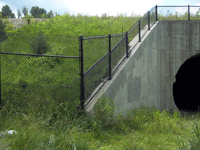
Specially designed fencing
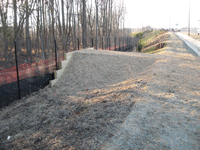
Wildlife escape ramp
Our Highways and Wildlife Protection
The Maryland Department of Transportation State Highway Administration (MDOT SHA) and the University of Maryland Center for Environmental Science Appalachian Lab partnered to study wildlife use of existing highway structures. The study demonstrated that many species of wildlife use variously sized structures to cross under Maryland highways. Most of these structures are underpasses, which are associated with stream valleys.
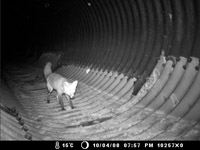
A fox shown using a cylinder culvert
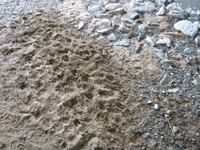
Wildlife tracks going through underpasses
MD 200 the Intercounty Connector (ICC) and Wildlife Preservation
The ICC has 44 bridges and culverts designed to provide safe passage for deer and small mammals. Culverts carrying streams are also designed to provide aquatic species passage. ICC bridges over parks and streams are longer than normal to lessen the amount of environmental impact in these sensitive areas and to allow greater clearance for wildlife and vegetation.
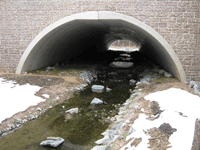
Culvert carries a stream
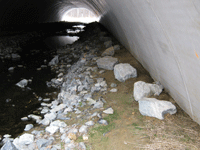
Culvert accessible by aquatic and land wildlife
Wildlife Relocation Efforts
Over 900 Eastern Box Turtles were relocated from the highway construction area to parks with suitable habitat. MDOT SHA partnered with the Towson University Biology Department to study the effectiveness of the relocation efforts. Relocated turtles adapted to their new locations.
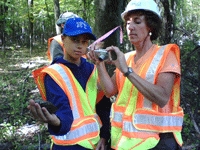
Professional biologists worked with volunteers
and
students to collect data on relocated turtles
Publications
Contact Information
Wildlife Program
MDOT State Highway Administration
707 North Calvert Street
Baltimore, MD 21202
[email protected]